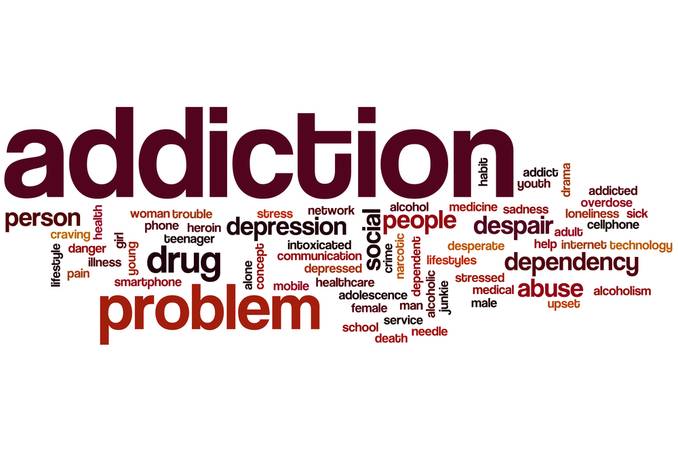Called “fake weed” or “synthetic marijuana,” spice is a combination of human-made chemicals and herbs with mind-altering results. The substances in spice are like the ones in marijuana in some ways, though they can be more addictive and dangerous, leading many to ask: what is Spice Addiction? In this guide, we’ll look at spice addiction, characteristics of the designer drug, and much more.
Though spice can be considered similar to cannabis in some ways, its effects are somewhat different from those of marijuana and are usually much stronger. Usually, someone sprays chemicals that compose ‘spice’ and lace plant materials to make them look more like marijuana.
Spice addiction is quickly emerging among young people, putting their lives at serious risk. The drug, promoted as safe, was sold like cigarettes for several years before everyone caught on, and usage began spreading like a rash. In 2015 alone, using Spice sent over 150 people to the hospital due to spice poisoning.
It is vital to know that many different names imply fake marijuana, not just K2 or Spice. Therefore, spice isn’t the only word you should keep on your radar.
What is Spice Addiction?
Table of Contents
- What is Spice Addiction?
- Spice and False Advertisement
- Who Uses Spice the Most?
- How Spice is Used
- What are the Warning Signs of Spice Addiction?
- Spice Addiction Symptoms
- Effects of Spice Abuse
- Acute Psychiatric Effects
- Acute Physiological Effects
- Combining Spice with Other Drugs
- Spice Addiction Treatment
- Help for Spice and Synthetic Marijuana Substitutes: Found Here
- Medically Reviewed By
Because it is a mixture of plants and natural spices, spice came into the drug scene as supposedly harmless. Spice could be way more lethal and potent than weed.
Spice is a designer drug, signifying that its synthetic elements are constantly changing.
For example, suppose one cannabinoid in spice products is made illegal. In that case, producers may exchange it with another chemical and sidestep legal restrictions. There are over 150 synthetic cannabinoids that someone can put in spice. Yet, the government outlaws only 50. The constantly shifting chemical composition of spice is a mystery, making its results unpredictable.
There are concerns that spice mixtures could contain heavy metal residues in addition to hazardous chemicals (like nail polish remover), putting them at higher risk for severe health overdose and abuse.
Spice and False Advertisement
On synthetic cannabinoid products, the label usually says, “not for human consumption.” Labels also typically claim that spice has natural material taken from an assortment of plants. Though, the only natural parts of these products are the dried plant materials. Chemical tests indicate that the mind-altering, active ingredients are cannabinoid compounds created in laboratories.
The advertisement in gas stations, on the internet, and in head shops for spice is false. The information states that it is supposedly a “healthy” alternative to marijuana. Users are oblivious that the drug contains unsafe synthetic cannabinoids and different chemical additives that are not on its label. Stores will promote the drug as incense to smoke, enticing younger people.
Since the chemicals in Spice have a high prospective for abuse and no medicinal advantage, the DEA (Drug Enforcement Administration) has made several of the active chemicals in spice illegal. However, those who make spice try to avert these laws by using other chemicals in their concoctions.
The actual effects of spice could be hazardous and, in some cases, deadly.
Who Uses Spice the Most?
Spice usage is most rampant among teenagers and young adults. Among high school students, it is the second most commonly abused illegal drug next to marijuana and is twice as liable to be used by young males. Its increasing popularity is probably due to accessibility. Spice is still legal and accessible through many online outlets. Therefore, young users have discovered that spice is easy to get and easy to get away with using.
Spice does not appear in routine drug tests. Yet, its active chemical structure shows it to have a high risk for spice addiction and abuse.
How Spice is Used
Most people smoke Spice by rolling it in the same papers used for weed and tobacco. Additionally, some individuals make herbal tea from ‘Spice.’ Others purchase spice products as liquids to use in vaping.
To diagnose an addiction to spice, medical experts use the root of a pathological pattern of behaviors related to the use of spice. These behaviors include:
Impaired control – a desire to take spice in gradually higher doses. Research shows that poor control could advance after just a couple of doses of synthetic cannabinoids, heightening the danger of overdose. There is a strong possibility of the consummation of a lethal amount.
Social Impairment – The acute psychoactive effects of prolonged spice use could stop a person from participating in activities to sustain family relations and negatively impact schooling and work.
Risky use – Risky use is the tendency of people to continue doing activities (i.e., driving) despite understanding that this could be hazardous due to their altered state.
Pharmacological criteria – These criteria mainly consist of withdrawal and tolerance, the two chief characteristics of dependence. Tolerance is a physiological dulling to the drug effects. A more significant amount is necessary to get the same result. Withdrawal is the body’s physiological response when someone no longer uses spice.
What are the Warning Signs of Spice Addiction?
A person smoking spice feels its effects within a few minutes. However, the high may last up to 8 hours based on the potency of the batch. Every spice package might vary in chemical makeup, creating different levels of efficiency.
Usually, with regular spice use, an individual will experience paranoia, hallucinations, delusions, or dysphasia. Some spice users will become easily stressed or very anxious when using the drug, exhibiting aggressive behavior as a result. If you feel your child might be suffering from spice addiction, look for these symptoms:
- Nausea
- Seizures and shaking
- Pale skin
- Spastic, uncontrollable body movements
- Excessive sweating
- Increased heart rate, heart palpitations, and blood pressure
Since it has only of late surfaced in today’s drug cultures, the lasting effects of spice addiction are still a mystery. Therefore, people should monitor spice use carefully.
Spice Addiction Symptoms
One of the chief concerns when it comes to synthetic marijuana is the changeability of symptoms. The symptoms could be difficult to predict since the components are hard to control.
Tetrahydrocannabinol (THC) is the chemical responsible for marijuana’s psychological effects. With an onset like that of THC, the instant psychological effects of spice include:
- Elevated mood
- Serenity
- Feelings of well-being
- Creative thinking
- Euphoria
Physical symptoms of spice users include:
- Vomiting
- Dizziness
- Elevated heart rate
- Clumsiness
- Light-headedness
- Nausea
- Ringing in the ears
- Drowsiness
The behavioral symptoms:
- Paranoia
- Hallucinations
- Anxiety
- Aggressive behavior
- Disorientation
- Depressed mood
- Confusion
- Psychosis
Effects of Spice Abuse
There is a lack of epidemiological data for spice compared to other prohibited drugs such as heroin or cocaine. There are a few reasons for this:
- Synthetic marijuana is relatively new compared to other drugs.
- It is hard to identify in the standard urine tests.
- Its active constituents are hard to locate.
- Individuals who use spice also use other drugs, creating more complexity in investigating spice-induced effects.
Though, researchers have noticed a few harmful and lasting effects. These include:
Acute Psychiatric Effects
- Confusion and restlessness could last for several days after the use of spice, along with clumsiness and inadequate physical coordination.
- Medical professionals observed new-onset psychosis in people with no history of psychiatric illness.
- Aggression could lead to violence.
- Feelings of being outside the body or in the present time, losing time.
- There have been reports of extreme paranoia and suicidal tendencies.
- Adolescent abusers of Spice are especially vulnerable to psychosis due to the over-activation of the cannabinoid system in their developing minds.
Acute Physiological Effects
- Abnormal heartbeats could worsen cardiac complications like heart attacks.
- Kidney injury
- Breakdown of muscle tissue
- Severe agitation that could result in seizures
- Synthetic cannabinoids could create substantial alterations in cognitive functioning and emotional processing.
Combining Spice with Other Drugs
Proof of synthetic marijuana use with other drugs is scarce, but some data shows adverse consequences. A study of synthetic cannabinoid use found a link between injecting drugs like methamphetamine, and cocaine and the abuse of psychoactive prescription drugs.
Spice abuse could be very destructive to physical and mental health, especially for people susceptible to psychiatric issues. Psychiatric problems could worsen with the use of spice. If you are suffering due to using spice, a spice addition treatment program might help.
Spice Addiction Treatment
If you feel using spice affects a loved one, it is vital to get professional help quickly. Spice is more lethal than it appears on the surface, and people must take spice abuse seriously. Like cocaine, heroin, meth, and other street drugs, there is no regulation of spice production. Manufacturers of Spice could put anything they want in their mixture. Therefore, spice users are always at risk of its harmful results.
Treatment for spice addiction in young people is comparable to that for marijuana use. The first step towards recovery starts with detoxification. It takes at least seven days for a spice user to rid their body of drug toxins. Though, the cravings could last years after they stop using. Hence, spice addiction treatment dramatically depends on behavioral counseling and therapy.
These processes help spice users recognize the reality of their addiction, instructing them on how to stay off the drug and replace spice-using habits with sober, healthy activities. A critical step to spice addiction recovery is a strong, solid relationship and continued addiction management.
Counseling and a sound support system formed with individuals dealing with similar problems at a similar point in life could positively influence long-lasting sobriety.
Help for Spice and Synthetic Marijuana Substitutes: Found Here
No matter the brand name or type of ‘Spice’ you have found yourself using, Find Addiction Rehabs can help! Our recovery representatives are ready and waiting to help you past dependence on Spice or other drugs, and onto a path of recovery. With a quick and confidential call, get options nationwide for you or your loved one!
Give yourself a break from trying to chase the next high, whether Spice or otherwise, and reach out now… your recovery is waiting!
Brandon is a highly skilled content writer and behavioral health marketer with over a decade of experience. In his own words: in my work with Find Addiction Rehabs, I have dedicated my expertise to a cause close to my heart – substance abuse recovery. Through my passion for the field, I’ve successfully compiled a track record of crafting compelling content that educates, inspires, and supports those on their recovery journeys.




